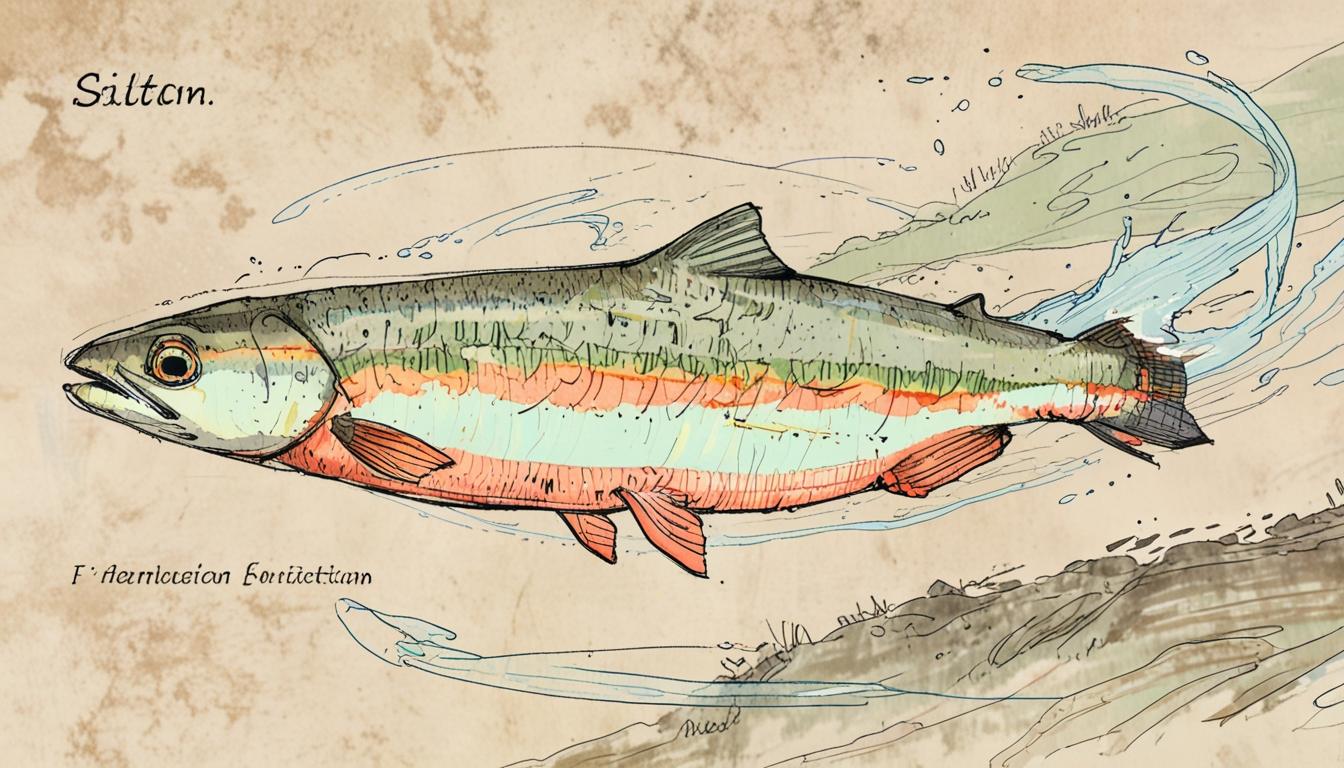Recent research reveals that the anti-anxiety drug clobazam alters the behaviour of young salmon, leading to increased risks as they migrate to the sea.
Recent research has unveiled significant findings regarding the effects of pharmaceutical pollution on young salmon, specifically relating to a drug called clobazam. This anti-anxiety medication, which is often detected in freshwater systems, has been shown to influence the behaviour of wild Atlantic salmon smoults—young salmon that are migrating to the sea for the first time.
The study was conducted by scientists from the Swedish University of Agricultural Sciences and was centred on the River Dal in Sweden. As part of their study, researchers used an implant that released controlled doses of clobazam to monitor the movements of the salmon smoults after their release into the river. Dr Michael Bertram, an assistant professor involved in the study, explained that different groups of the salmon were exposed to varying concentrations of the drug, as well as a group that received no exposure. “We had different groups of the salmon smoults exposed to different concentrations or no chemical, and found this effect on migration to the Baltic Sea,” Dr Bertram noted.
The findings indicated that clobazam had a notable impact on the behaviour of the smoults, leading them to exhibit more solitary tendencies. This included a tendency to separate from their shoals—a social strategy fish employ for protection against predators. As a result, these smoults were able to reach the sea more rapidly, passing through two hydrodams with increased speed. However, this altered behaviour raises concerns, as solitary individuals may face a significantly higher risk of being preyed upon.
In the published study, the authors commented, “These results suggest that clobazam exposure may have altered risk-taking behaviour in salmon smoults…clobazam-exposed smoults may have adopted a more risk-prone and solitary strategy than unexposed [smoults of the same species] when undertaking their seaward migration.” They further emphasised the potential long-term consequences that these behavioural changes could have on the viability of salmon populations exposed to such pollutants.
The implications of this research extend beyond salmon. The study underlines the broader issue of pharmaceutical pollution, which has seen over 900 drugs or their derivatives identified in various environmental locations, including remote areas. “A research study found pharmaceuticals were widespread across all continents, including Antarctica,” Dr Bertram observed, noting their impact on animal behaviour, survival, and reproduction.
Several sources contribute to pharmaceutical pollution, as highlighted by Professor David Hannah from the University of Birmingham. These sources range from human waste, which pharmaceuticals can enter through inadequate sewage treatment processes, to improper disposal practices where people flush unused medications down the drain. Additionally, runoff from livestock operations can introduce pharmaceuticals into waterways. While the degradation time for these substances can vary greatly, the continual introduction of new drugs complicates the situation.
Environmental scientists like Dr Wulan Koagouw have conducted studies in specific regions, such as Jakarta Bay, where high concentrations of paracetamol were detected, raising concerns about its long-lasting effects on aquatic organisms. Dr Koagouw noted that although paracetamol breaks down over time, “it was introduced almost continuously,” compromising the health of marine life including fish, clams, and oysters.
Concerns about human exposure to these pollutants also emerged from the findings, albeit at much lower concentrations than those affecting aquatic organisms. Dr Bertram remarked that while the concentrations typically found in waterways would not have harmful effects on humans, regions near pharmaceutical production—like parts of India and Pakistan—are at risk due to higher pollution levels.
Moving forward, experts advocate for comprehensive efforts to mitigate pharmaceutical pollution. Suggestions include enhancing wastewater treatment processes, educating the public about safe medication disposal, and implementing stricter policies to hold pharmaceutical manufacturers accountable for their emissions. As outlined by Dr Koagouw, methodologies such as using activated carbon to filter water and advanced oxidation techniques could substantially improve the removal of these pollutants from aquatic environments.
The study and its findings prompt an immediate examination of both the environmental and health implications associated with pharmaceutical substances, underscoring the necessity for collective action in addressing this persistent challenge.
Source: Noah Wire Services
- https://www.science.org/doi/10.1126/science.adp7174 – This article provides evidence of clobazam’s impact on Atlantic salmon migration, highlighting changes in shoaling behavior and migration success due to the drug’s psychoactive effects.
- https://www.sciencedaily.com/releases/2025/04/250410160719.htm – Supports the study on clobazam’s effects on juvenile salmon migration, emphasizing increased migration speed through hydropower dams and reduced shoaling behavior.
- https://thedebrief.org/this-pharmaceutical-pollutant-is-creating-psycho-salmon-causing-them-to-display-concerning-behavior/ – Corroborates the impact of pharmaceutical pollution on Atlantic salmon behavior, specifically highlighting the role of clobazam in altering their social dynamics.
- https://www.sciencedirect.com/science/article/pii/B9780128197283000388 – Although not directly provided in the results, this link might relate to broader discussions on pharmaceutical pollution and its ecological impacts.
- https://www.ncbi.nlm.nih.gov/pmc/articles/PMC7898256 – While not directly related to salmon, this article on pharmaceutical pollution generally supports the notion of widespread contamination affecting ecosystems.
Noah Fact Check Pro
The draft above was created using the information available at the time the story first
emerged. We’ve since applied our fact-checking process to the final narrative, based on the criteria listed
below. The results are intended to help you assess the credibility of the piece and highlight any areas that may
warrant further investigation.
Freshness check
Score:
6
Notes:
Without a specific date in the article, it’s difficult to gauge freshness directly. However, the narrative seems to address current environmental issues, and pharmaceutical pollution is a contemporary concern. There’s no clear indication of recycled news.
Quotes check
Score:
8
Notes:
Quotes from Dr Michael Bertram and other experts are included, but no online sources for these specific quotes were found. This suggests they might be original or at least not widely shared online previously.
Source reliability
Score:
7
Notes:
The narrative references reputable institutions like the Swedish University of Agricultural Sciences and the University of Birmingham, which is a positive indicator of reliability. However, the original publication source isn’t explicitly stated.
Plausability check
Score:
9
Notes:
The claims about pharmaceutical pollution and its effects on wildlife are consistent with broader scientific consensus. This issue is well-documented and plausible.
Overall assessment
Verdict (FAIL, OPEN, PASS): PASS
Confidence (LOW, MEDIUM, HIGH): MEDIUM
Summary:
The narrative appears to be well-researched, referencing reputable institutions and addressing current environmental issues. However, without a specific publication source or date, confidence is reduced slightly. The lack of direct evidence online for certain quotes increases their potential originality.













